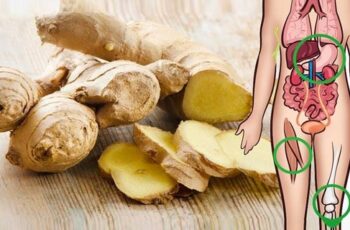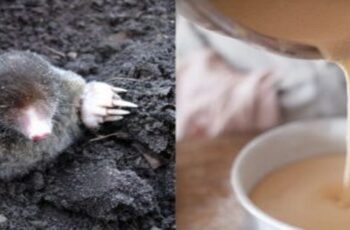Ad Blocker Detected
Our website is made possible by displaying online advertisements to our visitors. Please consider supporting us by disabling your ad blocker.
At the very beginning, you will want to apply any nitrogen-rich organic fertilizer. This gets the plant off on the right foot as it promotes the growth of leaves and stems.
Manure tea – manure is a nice slow-release fertilizer that feeds your garden with plenty of nitrogen and potassium. You can apply it as a liquid in compost tea.

Blood meal – if you’ve tested your soil and found it’s lacking in the nitrogen department, consider adding blood meal to it to give your growing medium a boost. The blood meal is very concentrated; be sure to apply it according to the instructions on the package.

Fertilize pumpkins once they begin to bloom:
Once pumpkins begin to flower, they need more phosphorus.

With too little phosphorus in the soil, plants may produce fewer flowers. If you notice this all over your garden, take note, then fertilize more than just your pumpkins. Chicken manure and bone meal are two excellent choices for providing your plants with more phosphorus.
Chicken manure – all manures contain varying amounts of NPK. composted chicken manure contains nitrogen, it also has higher levels of phosphorus. If you don’t (yet) raise your own chickens, you can buy chicken manure pellets in a store or from this page on Amazon.
Bone Meal – Like blood meal, bone meal is another great way to restore nutrients to the soil. It is highly concentrated, so be sure to use it as recommended.
Fertilizing Pumpkins During The Fruiting Phase:

It’s so much fun to watch your pumpkins grow. Kids love to see their Halloween toys grow bigger and bigger (be sure to involve them in some kid-friendly gardening activities).
Once your pumpkins reach that “fun” stage, it’s time to give them some extra potassium. Potassium helps the fruit regulate and store water and carbohydrates. This is especially important if you want to eat a lot of pumpkin pies.
Kelp or seaweed – is not a local option for many gardeners, unless you live by the sea, a seaweed fertilizer has its merits in the garden. It can be incorporated into liquid fertilizer or used as a mulch. If you can’t collect your own, there are plenty of places to buy organic seaweed online.

You can apply a mixture of composted seaweed once a week when the fruit begins to set.
5. Prune your pumpkin vines.

While it may be unnecessary to cut pumpkin vines, some people do it anyway. Pruning vines help keep the canopy open and airy; free from powdery mildew and other diseases.
Cutting the leaves is also helpful if you notice a fungal infection. Just cut off the infected leaves and let your vines continue.
Finally, you’ll want to keep your pumpkin plot as weed-free as possible. Don’t forget to mulch to keep moist soil and weeds at bay.
Best Pumpkin Varieties for Huge Harvests
Size is relative, especially when it comes to growing pumpkins. You probably wouldn’t want to carve a 50kg pumpkin. Nor would it be easy to eat an XXL sugar pumpkin in one sitting. Remember that larger pumpkins are typically less sweet, at the same time they tend to have more watery and stringy flesh. Sometimes smaller is better.
Before choosing a variety of pumpkins for your garden, take some time to think about how you want to use your harvest.
While giant pumpkins are usually grown exclusively for bragging rights, we’re guessing you’re here to grow something that’s also edible. Medium to large-sized pumpkins is probably what you are looking for.
Medium Pumpkin Varieties
Casper – an all-white pumpkin that is wonderful for decorating and for cakes and pies.
Jack of all trades – the perfect pumpkin for Halloween carving. 95 days to maturity.
Rouge Vif D’Etampes – also known as Cendrillon, is a brilliant scarlet French pumpkin. The fruits weigh on average 5 to 8 kg and have the shape of a wheel of red cheese. Decorative and tasty all in one.

Great Pumpkin Varieties
Aladdin – a classic pumpkin that yields fruit in the amount of 12-18kg. by piece.
Early Giant – a reliably producing pumpkin with elongated fruits that weigh an average of 15 kg.
Full Moon – if you’re looking to showcase your pumpkin growing skills, this huge white variety might be the one for you. 110-115 days to production.
Wolf – if you value good control over your Halloween pumpkin, consider this strain. The fruits, on average, weigh between 8 and 12 kg.
Some Final Pumpkin Growing Tips
We’d all like to think that growing a pumpkin is as easy as putting a seed in the ground and waiting until October to harvest a glowing orange orb of carving delight. Then reality sets in and it seem much more complicated than that.
Try not to worry too much, pumpkins will still grow even without constant care.
In short, to ensure that you will have huge harvests of pumpkins:
- keep your plot free of weeds to ensure good air circulation between the large leaves
- water deeply, as close to the ground as possible (do not use overhead watering)
- use companion planting with your pumpkins and encourage pollinators to enter your garden
As important as it is to fertilize organically, be sure not to over-fertilize your pumpkins either.
Learn as you go, taking subtle cues from plants. In no time, you’ll be there harvesting the finest harvest of pumpkins you can imagine.

